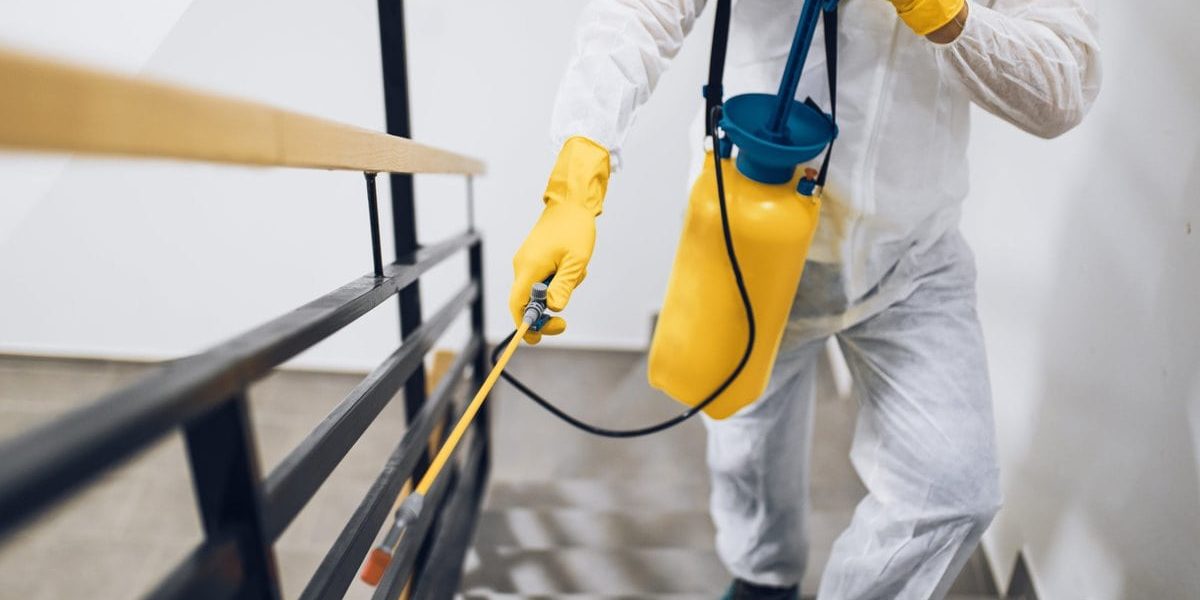Specialist Bed Bug Exterminator: Rest Easy Knowing Your Home is Bug-Free!
Specialist Bed Bug Exterminator: Rest Easy Knowing Your Home is Bug-Free!
Blog Article
Expert Insect Control Techniques for Long-Term Results
In the world of pest control, attaining sustained efficiency and long-lasting results calls for a careful approach that transcends mere elimination. Expert pest control techniques envelop a detailed approach that starts with a thorough examination and evaluation, adhered to by accurate parasite recognition to understand their behavior patterns. The execution of Integrated Pest Monitoring (IPM) principles, paired with eco-conscious therapies, creates the foundation of sustainable pest eradication. Nevertheless, real test lies in the recurring monitoring and upkeep of the treated areas, guaranteeing a pest-free environment for the near future. By diving into the details of these techniques, a much deeper understanding of expert parasite control methods for withstanding end results emerges.
Examination and Evaluation
Upon getting in a property for pest control solutions, the first action is a complete inspection and analysis to recognize the level of the problem and determine the most reliable therapy strategy. Professional pest control technicians are educated to thoroughly check out the premises, seeking indications of pest activity such as droppings, gnaw marks, nests, or any type of architectural damage. They will certainly also evaluate the problems that might be attracting pests, such as food resources, water leakages, or access factors.

Bug Recognition and Behavior

Moreover, recognizing the habits of the recognized parasite is vital to executing efficient control actions. Recognizing where insects nest, what they feed on, and their task patterns can assist pest control experts create approaches to eliminate them effectively.
Integrated Bug Management (IPM)
Integrated Insect Administration (IPM) methods combine several techniques to control and avoid pest invasions in a lasting and eco-friendly manner. bed bug heat treatment. By incorporating methods such as biological control, habitat adjustment, modification of social techniques, and the use of resistant varieties, IPM aims to reduce the use of chemical pesticides
Among the crucial concepts of IPM is the emphasis on avoidance. This aggressive technique involves surveillance pest populations routinely to detect any potential issues before they intensify. By identifying insect issues early on, pest control steps can be executed promptly and effectively.
Moreover, IPM promotes making use of non-toxic parasite control techniques whenever possible. This can consist of employing natural predators of the pests, presenting useful insects, or using pheromones to interrupt breeding patterns. By lowering reliance on chemical pesticides, IPM not just secures the environment but also helps maintain an equilibrium in the ecological community.
Environmentally-Friendly Treatments
Carrying out eco-conscious methods in bug control procedures can efficiently resolve invasions while focusing on ecological sustainability. Environmentally-friendly therapies concentrate on minimizing the effect of insect control methods on communities, non-target organisms, and human health. These methods typically include using all-natural predators, you could look here such as ladybugs or nematodes, to regulate pest populaces, lowering the requirement for chemical interventions. In addition, techniques like environment adjustment, such as changing moisture degrees or removing food resources, can help hinder pests without making use of unsafe substances.
Another key facet of environmentally-friendly therapies is making use of natural and biodegradable items that damage down quickly without leaving unsafe residues in the environment. Botanical insecticides obtained from plants like chrysanthemums or neem offer reliable parasite control while presenting marginal threat to non-target types. Furthermore, using methods like heat therapies or scent traps can target particular pests with precision, reducing the overall environmental impact of insect control techniques.
Ongoing Tracking and Upkeep
Normal inspections by skilled professionals are needed to recognize any type of signs of bug task, evaluate the efficiency of previous therapies, and make changes to the bug control plan as required. By keeping an eye on parasite populations over time, pest control specialists can track fads, expect possible issues, and execute preventative steps to lessen the risk of future invasions.
In enhancement to surveillance, maintenance techniques are vital for long-term bug control success. This consists of applying proper cleanliness steps to remove prospective food and water resources for pests, sealing entry points to prevent bugs from entering the facilities, and dealing with any type of structural concerns that might help with bug invasions (bed site here bug treatment). By including continuous surveillance and maintenance right into an incorporated pest monitoring strategy, businesses can guarantee a pest-free setting and guard their residential or commercial property against pricey damage and health risks
Verdict
In final thought, using professional bug control strategies such as thorough evaluation and assessment, exact parasite identification and understanding of their habits, integrated pest monitoring methods, environmentally-friendly treatments, and continuous tracking and upkeep are crucial for attaining long-term cause insect control. By applying these approaches, individuals can successfully manage pest invasions and preserve go to this site a pest-free atmosphere in a sustainable fashion.
Report this page